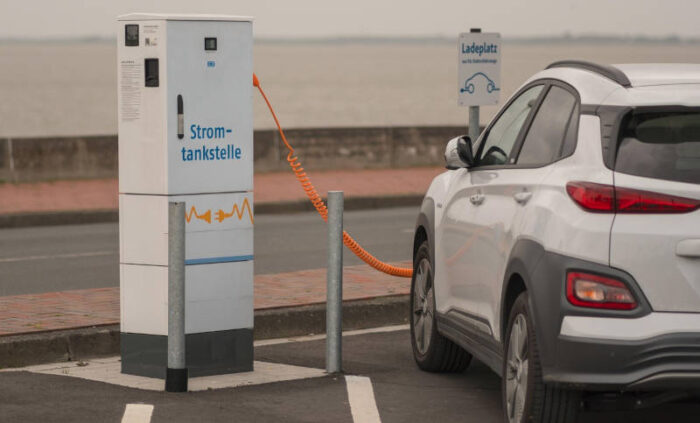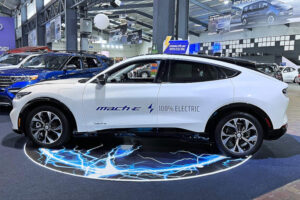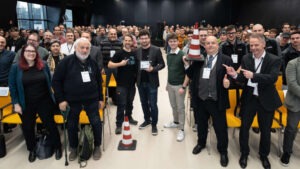Behind every EV charger, software determines what actually works together. EVerest is the open source approach that’s quietly driving change in the EV energy infrastructure.

EVerest is an open source firmware stack for EV charging stations, whose purpose is to “ensure that every car works with every charger with every charging app and network.” It’s also a Linux Foundation project, under the umbrella of LF Energy, although its origin story has hardly anything in common with how Linux got started.
That’s OK.
We all know and love the Linux story, how one 21-year-old kid, standing on the shoulders of free software pioneers, started something that was “just a hobby OS, not as big and professional like GNU” that would go on to change the world. However, it’s not always that a project with such humble beginnings can survive.
Not all open source projects are born equal. Some are like Linux: within reach of everybody with enough programming skills, spare time, connectivity and an entry-level computer. Others are almost exclusively conceived, used, and developed by big businesses and organizations, simply because meaningful contributions to their development require way more money, infrastructure, and knowledge of complex regulations than any single individual — or community of simple individuals — can afford.
This is the story of one of those other kinds of projects that, unlike Linux, will only ever be deployed by big business, although just like Linux, it may help make the world a better place.
EVerest’s Origin Story
Personally, I think that private automobiles as means of mass transportation can’t die too soon, that a China-EU partnership could be the way to make that happen, and that current EVs are uselessly and ridiculously complicated anyway.
In spite of all that, I think EVerest is important. We need EVs, and we can’t afford to repeat a mistake we made with portable devices, where something as obvious as “one cable to charge them all” took 20+ years to happen.
EVerest shows how open source is a non-negotiable component of avoiding the same mistake with EVs. It also has an interesting story, which I learned straight from Marco Möller, co-founder and managing director of Pionix, the company that started EVerest and then donated it to the Linux Foundation’s LF Energy. Before Pionix, Möller and his co-founders worked for a while in Intel drone unit, where Möller spent more than three years as the head of drone flight management software.
Möller said that project was producing pioneering civil drone software until, “very quickly all of our advantages were overtaken by open source disruption. It was fascinating to watch.”
Eventually, Möller and his partners left Intel to do innovation consulting work that included a company that was trying to build EV chargers. According to Möller, that’s when they realized that “more than 95% of what had to be built was boring ‘me too’ engineering — pure commodity.” At the same time, he said, there was a huge innovation race in that commodity space, and remembering their drone days at Intel, all his group knew what would happen next.
“Sooner or later, open source would take over all commodity in EV charging as well,” he said.
Having nothing to lose, and feeling that it was the perfect time to do it, they decided to jump head first in that race by founding Pionix and launching EVerest. For the record, the name was chosen because it starts with “EV” and evokes something huge, just like the software ecosystem and codebase they wanted to create.
Savings everywhere
The benefits of standardization, reuse and interoperability through open source are obvious in any industry: huge reduction of testing efforts, money, human and machine resources, much less waste, and the list goes on.
I wondered if and how running EVerest software saves energy in the field and posed the question to Möller.
Indeed it does, he said, in several ways, beginning with the centralizing of all software on one efficient computer. But the real impact of software defined charging architectures like EVerest, he said, is much bigger, and saves energy — and more — at all levels.
“Besides being easier to maintain, charging infrastructures using EVerest are future proof because new requirements can be met with simple software updates, including updates that make the hardware consume less energy,” he said.
“Open source software-defined chargers can make cars and grids work together to maximize the usage of renewable energy in the system,” Möller added. They can charge the car when there is excess renewable energy, pause when electricity is scarce and expensive, and even go bidirectional so the car becomes a buffer for the grid.
EVerest’s Status Today?
Möller said the project has seen strong support across Europe, especially in the Netherlands, Norway, and Germany, partly due to the industrial structure of those countries, and partly because they are leaders in EV adoption.
In the US, things were also looking good, until suddenly they weren’t.
He said that the US was also very bullish about EVs, and Pionix saw great engagement from startups, corporations, research centers, and the California Energy Commission. Even the American Joint Office of Energy and Transportation contributed money to accelerate EVerest compliance, with the protocol used to remotely control charging stations and the National Electric Vehicle Infrastructure program of the US Department of Energy. This helped the whole EV charger industry to move faster, thanks to open source.
Recently, that momentum slowed as general EV support in the US had become, as Möller diplomatically put it, “more complicated.”
This hasn’t hurt EVerest development, however. Support is widespread, said Möller, pointing out that EVerest has four times more contributors than any other LF Energy project, with some organizations investing millions of dollars. Outside the US, several European public research labs are participating.
Even in China, where the situation is made difficult because they use different plugs than the US and Europe, following the GB/T and now ChaoJi standards — things look promising. Möller has recently seen China start pushing for open source implementations of its standards, and some of those are now available as optional modules within EVerest, for everyone interested in building chargers compatible with Chinese cars.
Finding the Devil in the Details
With every complex project the devil is in the details, so the last thing I wanted to know from Möller was: Where is the devil in EVerest?
“There is a lot of diversity among cars and backend systems we have to connect with,” he answered, “but the greatest complexity comes from grid-specific constraints, that vary not just from country to country, but even from one utility to another.”
The result is that there are hundreds of grid codes just in the US. Europe is more harmonized, but still has a handful of different codes. The need to support bidirectional and smart charging means dealing with many more details. Wherever possible, EVerest exposes them via parameters, configuration flags, or lookup tables so that the same software can adapt to different codes. Again, thanks to EVerest being open source, everybody can contribute.
My final thought: in EVerest, “everybody” doesn’t mean what it means in the Linux kernel, and I’ve already mentioned how much I dislike today’s cars, EVs included. Still, a project like EVerest seems to me a crucial part of bringing sanity back to that world, and I wish it success.

Marco Fioretti is an aspiring polymath and idealist without illusions based in Rome, Italy. Marco met Linux, Free as in Freedom Software, and the Web pre-1.0 back in the ’90s while working as an ASIC/FPGA designer in Italy, Sweden, and Silicon Valley. This led to tech writing, including but not limited to hundreds of Free/Open Source tutorials. Over time, this odd combination of experiences has made Marco think way too much about the intersection of tech, ethics, and common sense, turning him into an independent scholar of “Human/digital studies” who yearns for a world with less, but much better, much more open and much more sensible tech than we have today.








